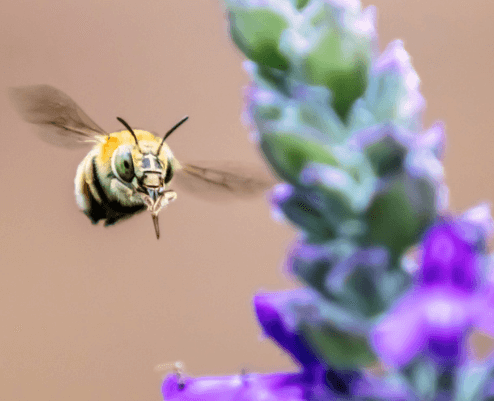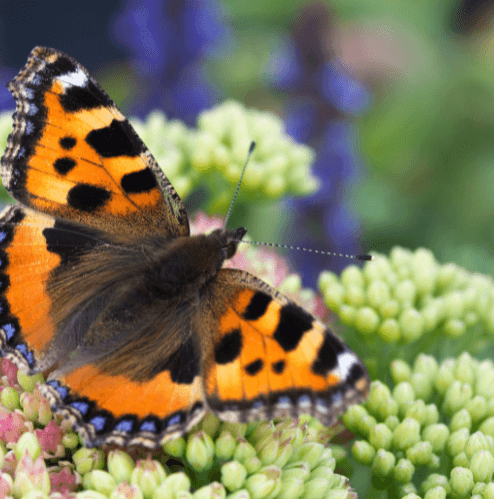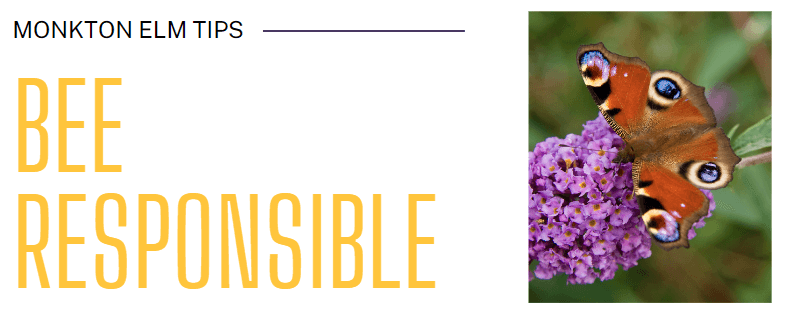
Bees and butterflies are an integral part of nature and indeed of the cultivation of crops, many of which rely completely on being pollinated by insects. There has been much in the news lately about the decline of the honey bee, whether it be due to disease or loss of habitat, but there are steps we can take as amateur gardeners to do our part, however small, in providing food sources and breeding grounds for all kinds of bees, other pollinating insects and butterflies.
More and more people are planting insect friendly plants, but this does not need to be at the expense of your enjoyment of your garden, as many plants have bright and colourful flowers with a long flowering period or several seasons of interest.
Many old favourites are butterfly and bee magnets – Buddleia is known as the Butterfly Plant and attracts Red Admiral and Tortoiseshell butterflies amongst others, whilst the sound of bees buzzing around lavender can be heard from metres away. There are now compact forms of these and many other cottage garden perennials available to the everyday gardener.
It’s well worth checking out plant labels when buying as they will include a little symbol of a bee denoting the plant’s usefulness in attracting pollinating insects to your garden.
To encourage butterflies and bees to your garden, try planting early flowerers to feed the overwintering adults as they emerge in spring. Then in summer, choose bright, single flowers (double flowers do not have visible pollen) to fill your border, along with some late flowerers to carry right through to hibernation time.
Did you know?
The honey bee’s wings are incredibly fast, at about 200 beats per second, which is where the ‘buzz’ comes from, and it takes 12 honey bees
their whole lifetime (around 5 weeks) to make 1 teaspoon of honey!
5 EXCELLENT
POLLINATOR PLANTS
Verbena bonariensis – a short lived perennial, but seeds prolifically. Heads of nectar-rich lavender coloured flowers on willowy stems up to a metre high give height in the border.
Sedum – bees and butterflies absolutely clamour around the flowers of Sedum – there’s many different types to choose from and it’s easy to grow.
Winter flowering cherry – Prunus subhirtella autumnalis – plant this small tree for winter blossom for early emerging insects to feed on.
Anemone japonica – the Japanese anemone is great for autumn colour in the garden and supports late butterflies and bees before hibernation.
Cosmos – this pretty summer bedding plant has open saucer shaped flowers filled with nectar.



